How To Use Hydrogen Peroxide For Toenail Fungus?
Say goodbye to unsightly nails with an easy daily application solution!

Image: Shutterstock
Toenail fungus can be a hassle, but treating it with hydrogen peroxide is an easy and effective home remedy. This common solution may help kill the fungus and stop it from spreading, keeping your nails safe from more damage. If you want to know how exactly hydrogen peroxide kills toenail fungus, then this article is for you. This article will show you how to use hydrogen peroxide to treat toenail fungus and keep your nails healthy. Just follow the steps carefully and you will be on your way to getting rid of that stubborn toenail fungus. With a little patience and consistency, you will see great results. Keep reading!
In This Article
What Is Hydrogen Peroxide?
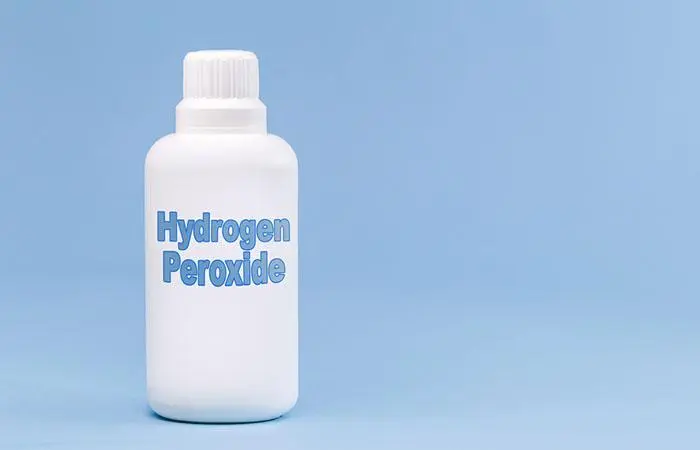
Hydrogen peroxide is a chemical compound valued for its disinfectant, antiseptic, and bleaching properties. It effectively eliminates bacteria, viruses, and fungi, making it a popular choice for household use. Available in various concentrations, it is commonly employed to cleanse wounds and sanitize surfaces. Its oxidizing nature breaks down and neutralizes harmful microorganisms, ensuring effective cleaning and sterilization in diverse settings.
Hydrogen peroxide is a common remedy for treating issues like toenail fungus. But before we get into how it works as an antimicrobial solution, let’s uncover the causes of toenail fungus to understand why such treatments are necessary.
Key Takeaways
- Hydrogen peroxide may effectively treat toenail fungus by releasing oxygen to break down fungal cells.
- Mixing hydrogen peroxide with water, Epsom salt, baking soda, or vinegar enhances its antifungal properties.
- Soaking the affected nail in hydrogen peroxide solution regularly may help promote healing and prevent further infection.
- Precautions such as diluting hydrogen peroxide and conducting a patch test are essential to avoid skin irritation.
Causes Of Toenail Fungus

Toenail fungus, also known as onychomycosis, can be caused by several factors (1) (2) (3) (4):
1. Warm And Moist Environment: Toenail fungus can be caused due to prolonged foot exposure to warm, moist environments like humid climates. Warmth and moisture soften the toenail and its skin, facilitating fungal invasion and infection, particularly by dermatophytes.
2. Poor Foot Hygiene: Neglecting foot hygiene may contribute to toenail fungus. Not drying your feet properly after bathing or wearing damp socks and shoes for extended periods may create an ideal environment for fungi to grow and infect the toenails.
3. Injuries To The Nail Or Skin: Any trauma or injury to the toenail or surrounding skin may create openings for fungi to enter and cause an infection. This can include minor injuries like stubbing your toe, getting a pedicure with tools that haven’t been properly sterilized, or wearing tight-fitting shoes that cause repeated trauma to the nails.
4. Weakened Immune System: People with weakened immune systems are more susceptible to toenail fungus infections. A compromised immune system reduces the body’s ability to fight off fungal infections effectively.
5. Age And Genetics: As we age, our nails tend to become more brittle and dry, making them more susceptible to fungal infections. Genetics also plays a role, as some people are genetically predisposed to fungal infections, making them more likely to develop toenail fungus even without other risk factors.
6. Walking Barefoot In Public Places: Walking barefoot in places like gyms, pools, or public showers also increases the risk of coming into contact with fungi that cause toenail infections.
7. Yeasts And Molds: Certain yeasts and molds may cause toenail fungus infections, similar to fungi. These tiny organisms penetrate the nail via openings in the skin caused by cracks or breaks.
These were some of the major causes of toenail fungus. It is important to identify the symptoms of this infection to be able to properly treat the condition. Read through the symptoms in the section below.
Toenail Fungus Symptoms

The following symptoms of toenail fungus may help you recognize its cause and seek proper treatment (1) (3):
- Thickened nails that may appear crumbly or brittle.
- Discoloration, often yellow or brownish, of the affected nail.
- Distorted nail shape, such as curling or unusual growth patterns.
- Foul odor emanating from the infected toenail.
- Pain or discomfort in the affected toe, particularly when wearing shoes or walking.
Now that you know the causes and the symptoms to look for, let’s determine whether hydrogen peroxide is effective for treating toenail fungus.
Is Hydrogen Peroxide Good For Toenail Fungus?

There is some debate among doctors about how well hydrogen peroxide works for toenail fungus. It is widely used as an antiseptic, disinfectant, oxidizer, and bleaching agent, and has strong antifungal properties (5) (6). Many people use it as a home remedy for nail fungus, believing it to be effective despite limited scientific research. However, high concentrations of hydrogen peroxide may harm human cells, causing skin damage, redness, itching, swelling, blistering, stinging, and rashes (7) (8).
Are you curious about hydrogen peroxide’s battle against fungal infections? Learn more in the section below!
How Does Hydrogen Peroxide Fight Fungal Infections?

Hydrogen peroxide combats fungal infections by releasing oxygen, creating an inhospitable environment (9). When applied to the affected areas, it breaks down into water and oxygen, generating bubbles that clean and disrupt fungal cells. It attacks fungal cell walls, weakening and killing them. Also its antibacterial properties prevent secondary infections, aiding natural healing. These known properties make using hydrogen peroxide for nail fungus a common practice. However, its effectiveness can be limited as it may not penetrate deep enough into the nail bed where the infection persists.
There are a few easy ways to use hydrogen peroxide for toenail fungus. Read through the next section to learn more.
How To Use Hydrogen Peroxide For Toenail Fungus?
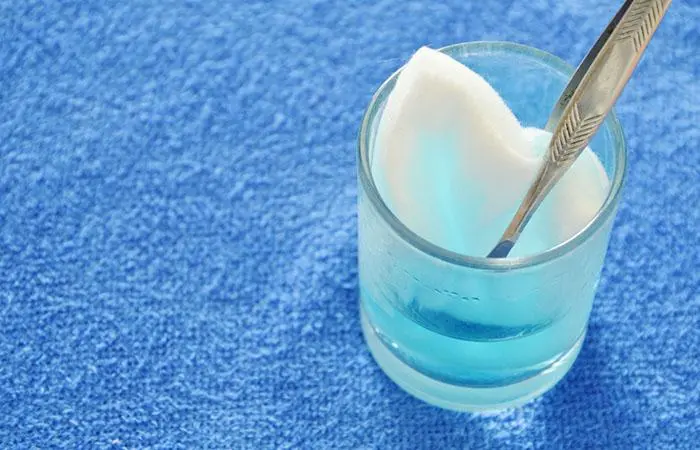
Using a hydrogen peroxide treatment to treat toenail fungus is simple. All you need to do is follow the guide below:
Note: Make sure you mix the solutions in recommended amounts only as using a higher concentration can dehydrate the nail, which may cause cracking and impair healing.
1. Soak Your Feet In Hydrogen Peroxide
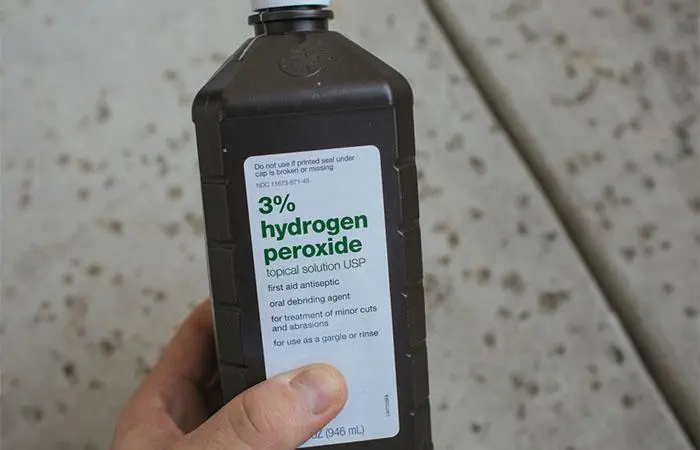
What You Will Need
- Hydrogen peroxide (3% solution)
- Water (enough to soak your feet)
- A tub
- A towel/tissues
Duration
15-30 minutes
Method
- Trim your nails and carefully file the affected area to reduce thickness, allowing for better hydrogen peroxide penetration.
- Cleanse the affected nail and surrounding skin with a mild antifungal cleanser and water, then pat dry thoroughly.
- Now, pour a small amount of hydrogen peroxide into the tub and mix it with equal parts water.
- Soak the affected nail in the solution for 15-30 minutes.
- Rinse the toenail with water and pat dry it with a clean towel or a tissue.
How Often?
Repeat twice daily until the fungus is gone. This may take several weeks to a few months.
Why This Works
Hydrogen peroxide has antifungal properties that may kill the fungus and clean the infected area, preventing further growth and aiding healing. This treatment may increase oxygen levels and effectively destroy the nail fungus (9).
Andrea Jean, a YouTube vlogger, demonstrates the use of hydrogen peroxide on her feet in a video. She says, “It Is an all-natural remedy if you have an athlete’s foot. You’re just going to want to shave off, rub off any of that extra dead skin. The hydrogen peroxide helps loosen it and kill any bacteria (i).”
2. Epsom Salt And Hydrogen Peroxide For Toenail Fungus
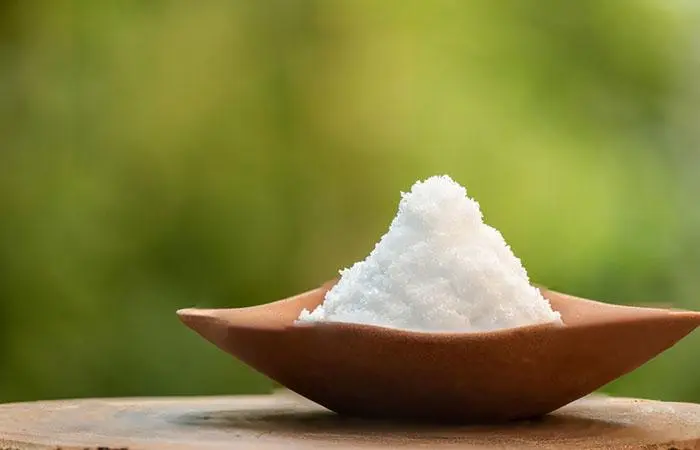
What You Will Need
- 2 tablespoons of Epsom salt
- 1 cup of hydrogen peroxide
- Warm water (enough to soak your feet)
- A tub
- A towel
Duration
15-20 minutes
Method
- Fill a tub with warm water.
- Add 2 tablespoons of Epsom salt to the water and stir until dissolved.
- Pour 1 cup of hydrogen peroxide into the mixture.
- Soak your feet in the solution for 15-20 minutes.
- After soaking, gently dry your feet thoroughly with a clean towel.
How Often?
Repeat this process once daily until the fungus is gone.
Why This Works
Epsom salt may help reduce inflammation and soften the skin, making it easier for the hydrogen peroxide to penetrate through (10) (11).
3. Baking Soda And Hydrogen Peroxide For Toenail Fungus

What You Will Need
- 2 tablespoons of baking soda
- 1 cup of 3% hydrogen peroxide
- Warm water (enough to soak your feet)
- A tub
- A towel
Duration
15-20 minutes
Method
- Fill the tub with warm water.
- Add in the baking soda and stir until dissolved completely.
- Pour the hydrogen peroxide into the mixture.
- Soak your feet in the solution for 15-20 minutes.
- After soaking, dry your feet thoroughly with a towel.
How Often?
Repeat this process once daily until the fungus is gone.
Why This Works
Baking soda may stop the fungus from growing because it has antifungal qualities. According to a study, sodium bicarbonate showed promising antifungal effects against a variety of fungal strains causing skin and nail infections in both laboratory and clinical settings (12).
4. Vinegar And Hydrogen Peroxide For Toenail Fungus
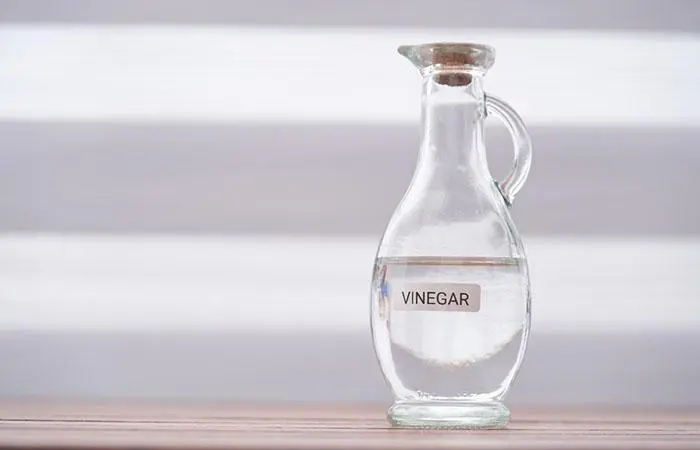
What You Will Need
- 1 cup of white vinegar
- 1 cup of hydrogen peroxide
- Warm water (enough to soak your feet)
- A tub
- A towel
Duration
15-20 minutes
Method
- Fill a tub with warm water.
- Add 1 cup of white vinegar to the water.
- Pour 1 cup of hydrogen peroxide into the mixture.
- Soak your feet in the solution for 15-20 minutes.
- After soaking, dry your feet thoroughly with a towel.
How Often?
Repeat this process once daily until the fungus is gone.
Why This Works
Vinegar has antimicrobial and antioxidant properties (13). These properties make it effective in combating bacterial and fungal infections, including toenail fungus.
You can also try other popular natural remedies if the above-listed methods do not work for you. Many people also recommend using tea tree oil for toenail fungus, for its natural ability to combat fungal infections and promote healthy nails. Garlic, aloe vera, and even mouthwash solutions are said to be effective as per anecdotal evidence.
If your symptoms don’t get better but rather worsen and spread on your foot, you should see a doctor immediately. Keep reading to know when to seek professional help.
When To Seek Medical Help
You should consult a doctor for personalized treatment solutions if you notice any of the following:
- Any changes in your toenail, like discoloration, thickening, or brittleness despite using over-the-counter treatments
- The infection seems to spread or starts causing pain
- More dryness and cracking around the affected area
A healthcare professional can suggest treatments or medications to manage the condition and stop it from worsening. If you are ever unsure or worried about your symptoms, it is always better to check in with a doctor for peace of mind.
Note: If your symptoms don’t get better but rather worse and spread on your foot, see a doctor immediately. If you notice more dryness and cracking, reduce soaking to a few times a week instead of daily.
If you plan to use hydrogen peroxide on your nails, you need to understand the precautions to be taken beforehand!
Precautions For Hydrogen Peroxide Use

Here are some important precautions to consider when using hydrogen peroxide to ensure safe and effective application.
- Perform a patch test on a small area of skin. This helps to check for any allergic reactions or sensitivity to hydrogen peroxide.
- Always dilute hydrogen peroxide before use. Full-strength hydrogen peroxide can be harsh on the skin and cause irritation.
- Use a clean cotton ball or swab to apply the solution. This ensures controlled application and prevents overuse.
- Use hydrogen peroxide in a well-ventilated area. Using it in enclosed spaces may lead to inhalation of fumes that could cause respiratory irritation or other health issues.
- Store hydrogen peroxide in a cool, dark place. Exposure to light and heat can reduce its effectiveness.
- Hydrogen peroxide should never be consumed. Ingesting hydrogen peroxide can cause serious internal damage and health complications.
- When using concentrated hydrogen peroxide for cleaning tasks that could cause splashes, wear gloves and eye protection. Rinse eyes immediately with plenty of water if exposed and seek medical attention if irritation persists, as it can cause serious injuries.
- Seek medical advice before use, especially if you have sensitive skin or other medical conditions. A doctor can provide guidance tailored to your specific situation.
 Pro Tip
Pro TipNo note that the fungus can also affect fingernails, the skin between the toes, the foot, and the heel area. Use caution and wash hands vigorously after treatments to prevent it from spreading to these areas. Here are some additional tips and suggestions in the following section to help you prevent possible toenail fungus. Continue scrolling.
Preventing Tips For Toenail Fungus
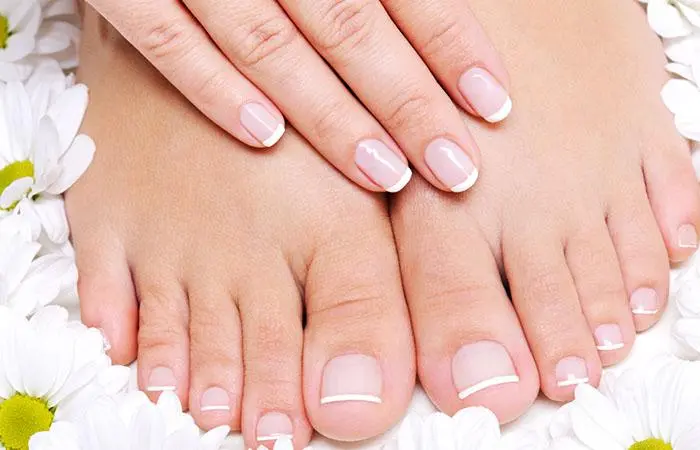
Below are some tips that will surely help you prevent this condition:
- Opt for shoes made with breathable materials like leather or canvas. These materials allow air to circulate, reducing moisture buildup and preventing fungal growth.
- Wear clean, dry socks every day, and change them if they become damp. This keeps your feet dry and reduces the risk of fungus.
- Wear socks made of moisture-wicking materials like cotton or wool. These fabrics help keep your feet dry by absorbing sweat.
- Use flip-flops or shower sandals in public showers, locker rooms, and pools.
 Pro Tip
Pro Tip- Cut your toenails straight across and keep them short. This prevents the nails from becoming damaged or ingrown, reducing the risk of infection.
- Clean and disinfect your nail clippers, files, and other tools regularly. This prevents the spread of fungus through contaminated instruments.
- Wash your feet daily with soap and water, and dry them thoroughly. Good hygiene helps remove fungi and bacteria that can lead to infections.
- Do not share shoes, socks, or nail care tools with others. Sharing these items can transfer fungi from one person to another.
Hydrogen peroxide is a simple yet effective home remedy for toenail fungus. Soak your feet in a hydrogen peroxide solution, combined with Epsom salt, baking soda, or vinegar, to leverage its antifungal properties and combat the infection. Using it regularly helps kill the fungus and cleanse the affected area, promoting healing. However, it’s important to dilute hydrogen peroxide and follow the right precautions to avoid skin irritation. For persistent or severe infections, consult a healthcare professional. This versatile treatment, along with good foot hygiene, can significantly aid in managing toenail fungus.
Frequently Asked Questions
Can hydrogen peroxide be used in conjunction with other treatments for toenail fungus?
Yes, hydrogen peroxide can be paired with other treatments to manage toenail fungus. However, it is important to follow the instructions for both treatments carefully. It is always best to consult with a healthcare provider before combining treatments to ensure they are safe and effective together.
How long does it take for hydrogen peroxide to kill toenail fungus?
Regular use of hydrogen peroxide may take several weeks or months to effectively kill toenail fungus, depending on how severe the infection is.
Why does hydrogen peroxide bubble on nail fungus?
When hydrogen peroxide contacts the fungus, you might notice bubbling. Do not worry as this is normal and shows that the solution is breaking down the infection.
Does hydrogen peroxide kill fungus on nail clippers?
Hydrogen peroxide can help disinfect nail clippers, but it may not effectively kill fungus embedded in the metal. Use antifungal solutions or boiling water to properly sterilize your nail clipper.
Is rubbing alcohol or hydrogen peroxide better for toenail fungus?
Hydrogen peroxide and rubbing alcohol both kill germs and fungi effectively. You can use rubbing alcohol directly on a clean cloth or soak your feet in a mixture of rubbing alcohol and water for 30 minutes to treat surface infections.
Is hydrogen peroxide harmful to nails?
When used correctly, hydrogen peroxide is usually safe to apply on your nails. However, high concentrations of hydrogen peroxide can cause severe skin irritation.
Discover three effective methods to tackle nail fungus using hydrogen peroxide. This video provides simple, step-by-step instructions for healthier nails. Don’t let nail fungus hold you back. Watch now and restore your nails to their best!
References
Articles on StyleCraze are backed by verified information from peer-reviewed and academic research papers, reputed organizations, research institutions, and medical associations to ensure accuracy and relevance. Read our editorial policy to learn more.
- Recent advances in therapies for onychomycosis and its management
ttps://www.ncbi.nlm.nih.gov/pmc/articles/PMC6600855/#ref-1 - Other fungi causing onychomycosis
https://www.sciencedirect.com/science/article/abs/pii/S0738081X0900251X - The nail in the elderly
https://www.sciencedirect.com/science/article/abs/pii/S0738081X10001239 - Skin, hair and nail fungal infections
https://journals.lww.com/co-infectiousdiseases/Abstract/1998/04000/Skin - Hydrogen Peroxide
https://pubchem.ncbi.nlm.nih.gov/compound/hydrogen_peroxide - Antiseptics and Disinfectants: Activity, Action, and Resistance
https://www.ncbi.nlm.nih.gov/pmc/articles/PMC88911/ - [The hydrogen peroxide paradox].
https://europepmc.org/article/med/16784144 - Hydrogen peroxide and cutaneous biology: Translational applications, benefits, and risks
https://www.sciencedirect.com/science/article/abs/pii/S0190962219307972 - Hydrogen Peroxide: A Potential Wound Therapeutic Target?
https://www.ncbi.nlm.nih.gov/pmc/articles/PMC5768111/ - Bathing Practices in Dermatology: Uses and Implications for Patient Management
https://www.ncbi.nlm.nih.gov/pmc/articles/PMC10506818/ - Bathing in a magnesium-rich Dead Sea salt solution improves skin barrier function, enhances skin hydration, and reduces inflammation in atopic dry skin
https://onlinelibrary.wiley.com/doi/abs/10.1111/j.1365-4632.2005.02079.x - Antifungal activity of sodium bicarbonate against fungal agents causing superficial infections
https://pubmed.ncbi.nlm.nih.gov/22991095/ - Acetic acid and the skin: a review of vinegar in dermatology
https://pubmed.ncbi.nlm.nih.gov/34350993/
Personal Experience: Source
StyleCraze's articles are interwoven with authentic personal narratives that provide depth and resonance to our content. Below are the sources of the personal accounts referenced in this article.
(i) i. Put Hydrogen Peroxide on your FEET & SEE WHAT HAPPENS! 💥 (this is cool and surprising)https://www.youtube.com/watch?v=WHNOFMQAyz8
Read full bio of Terri L Watts
Read full bio of Monomita Chakraborty
Read full bio of Anjali Sayee
Read full bio of Swathi E






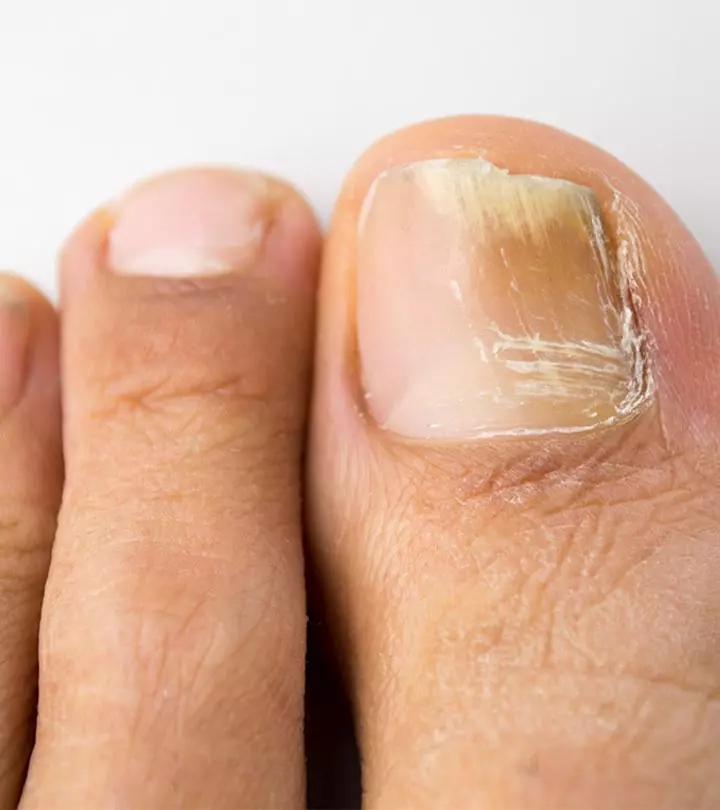






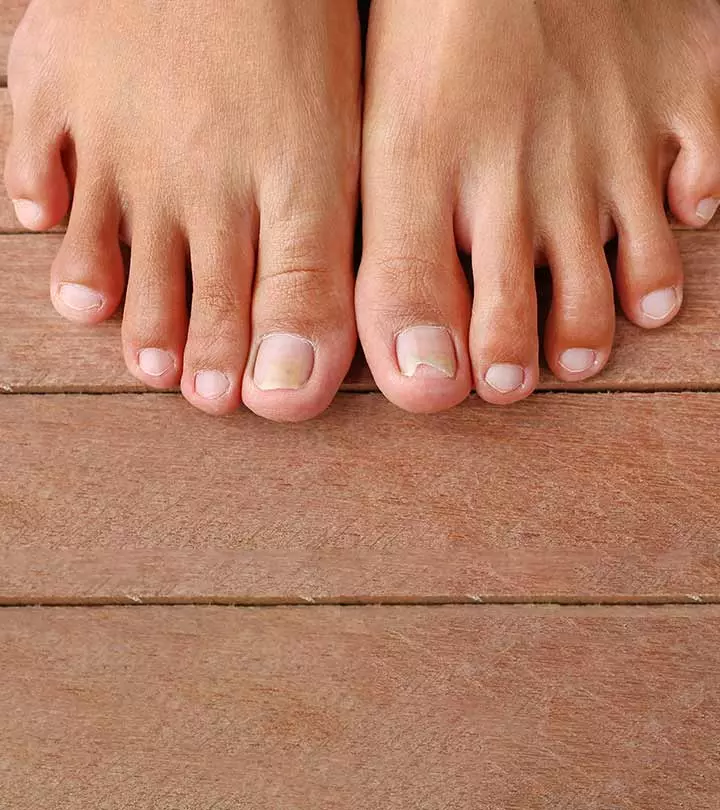

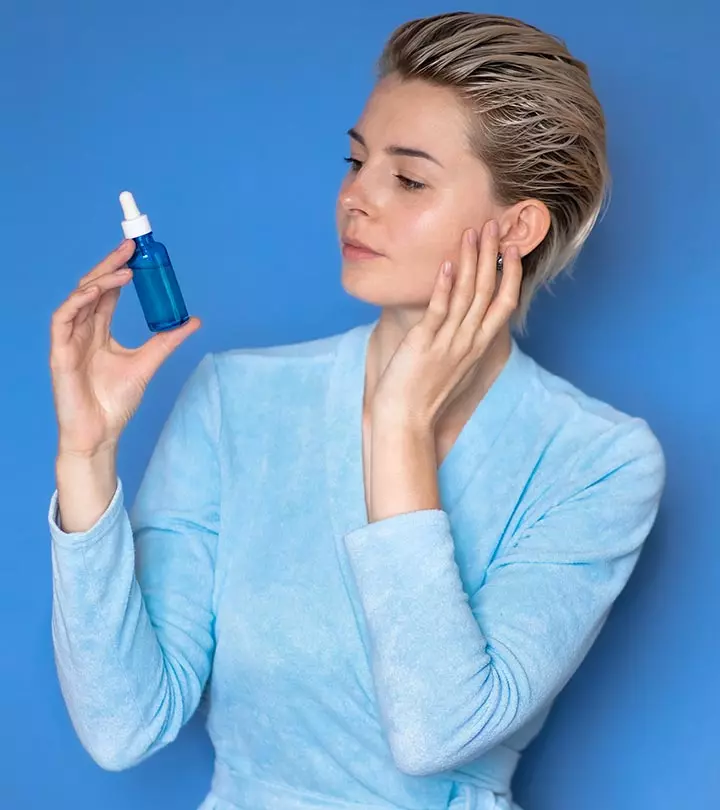








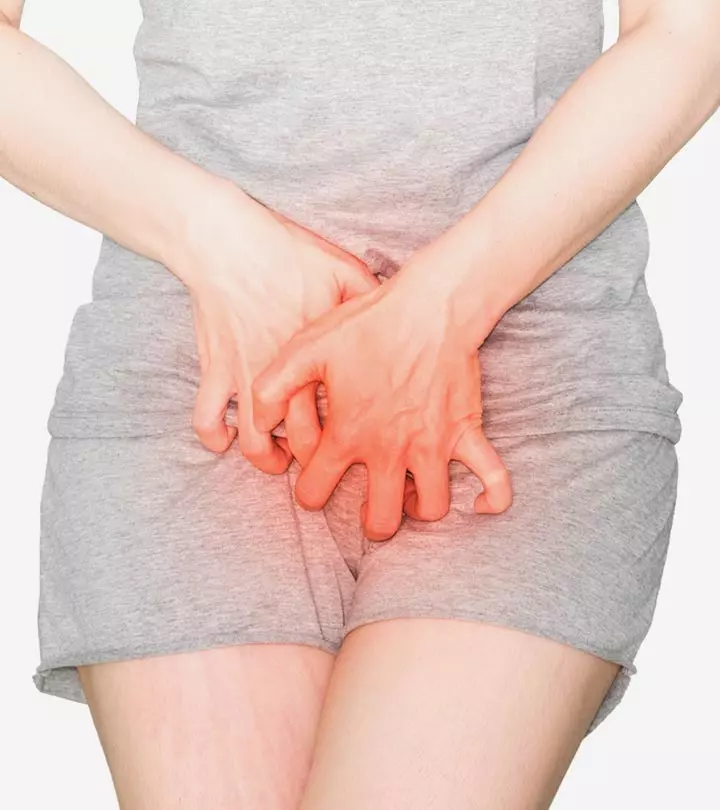


Community Experiences
Join the conversation and become a part of our empowering community! Share your stories, experiences, and insights to connect with other beauty, lifestyle, and health enthusiasts.